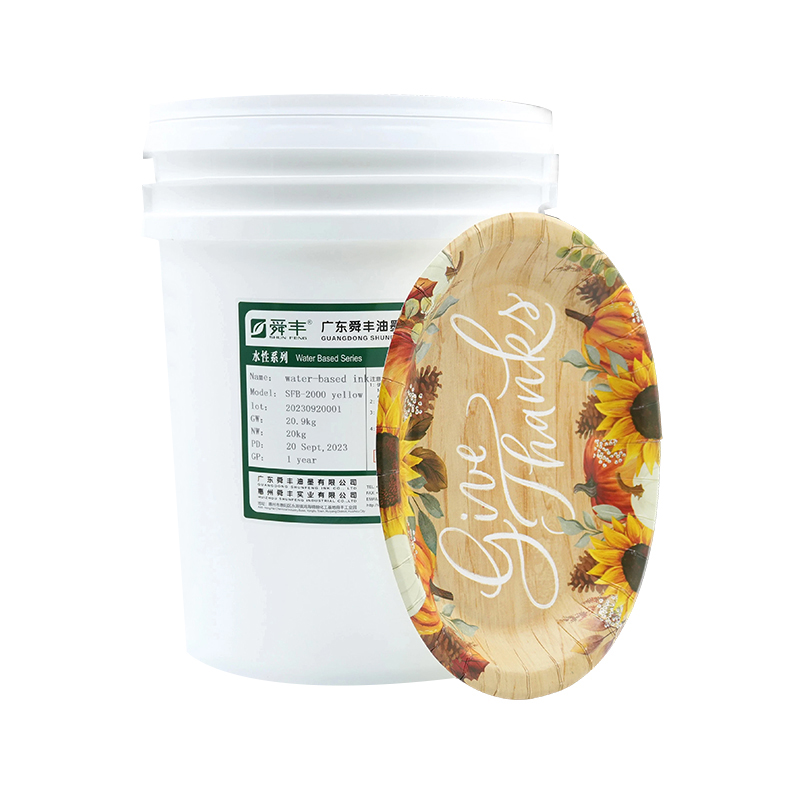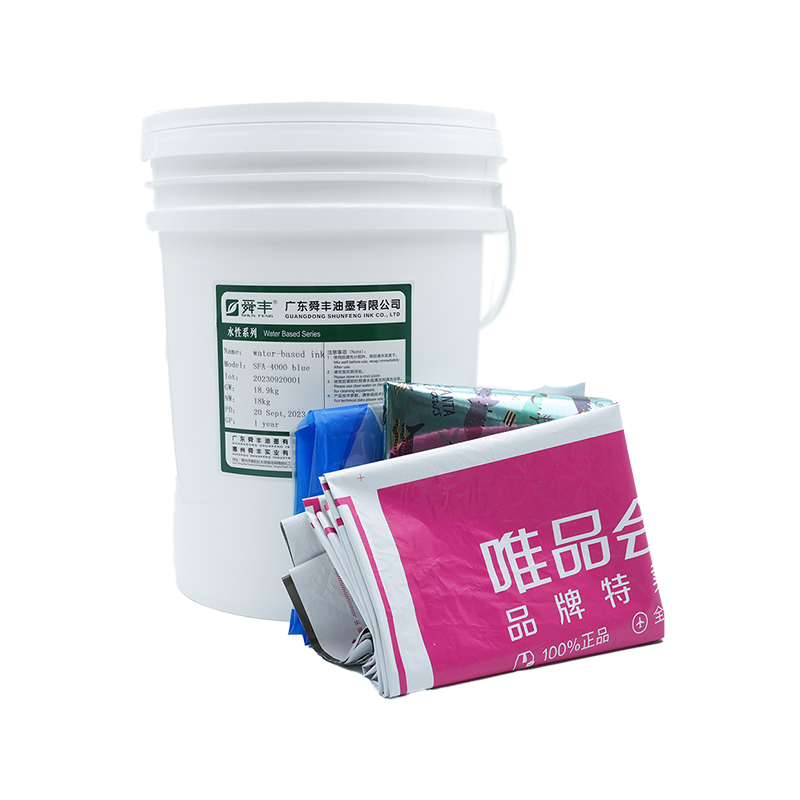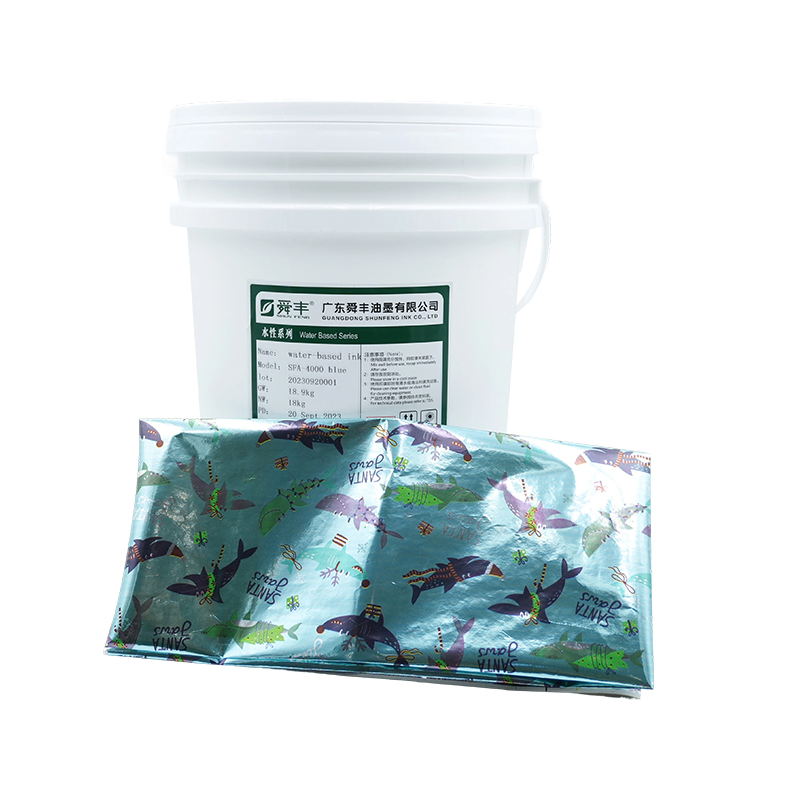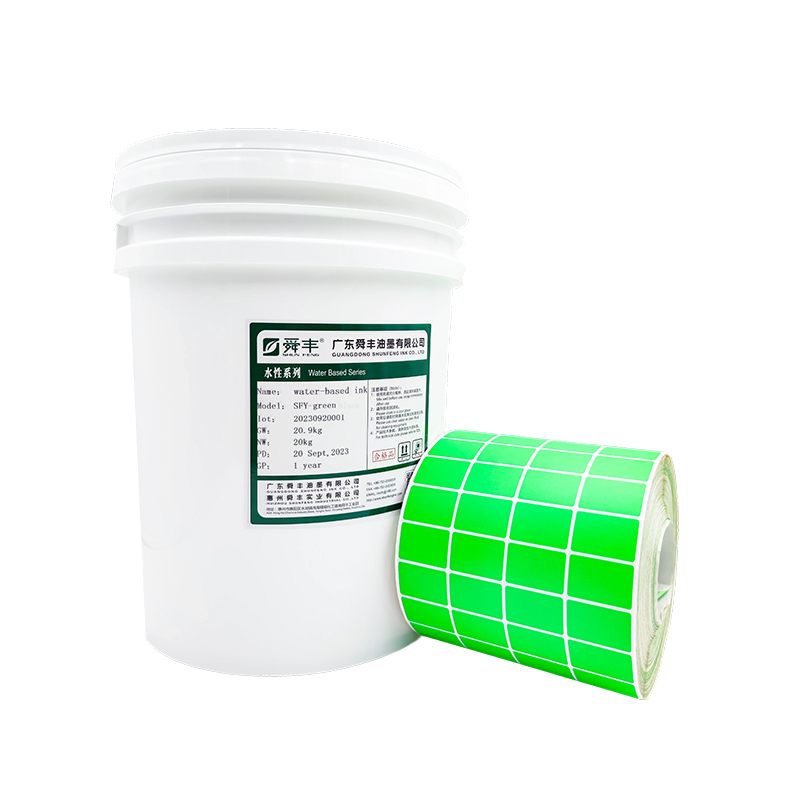How does Offset UV Ink for Plastic Film achieve excellent adhesion on a variety of plastic substrates?
Release Time : 2025-08-06
Offset UV Ink for Plastic Film demonstrates unique technical advantages in achieving excellent adhesion on a wide range of plastic substrates. This ink not only meets the demands of high-speed printing but also ensures a strong, durable coating on various plastic surfaces. To understand this process, we need to examine multiple perspectives, including ink formulation, plastic surface treatment, and curing mechanism.
First, in the ink formulation, Offset UV Ink for Plastic Film utilizes a resin system specifically optimized for plastic substrates. These resins exhibit excellent flexibility and adaptability, enabling them to form a uniform and strong bond on various plastic surfaces. By precisely controlling the resin molecular weight and distribution, the ink's flowability and film-forming properties can be adjusted, ensuring optimal adhesion to the plastic substrate surface. Furthermore, the addition of specific functional additives, such as tackifiers and wetting and dispersing agents, helps improve the ink's wettability and penetration into the plastic surface, thereby enhancing adhesion.
Second, plastic substrate surface treatment is a key factor influencing ink adhesion. Most plastic materials have smooth and chemically inert surfaces, making it difficult for standard inks to achieve good adhesion directly on them. Therefore, pre-treatment of the plastic surface is often required before printing to increase its roughness or introduce polar groups to enhance ink adhesion. Common treatment methods include corona treatment, flame treatment, and plasma treatment. These methods physically or chemically alter the microstructure and chemical properties of the plastic surface, allowing ink molecules to diffuse more easily and embed into the micropores of the substrate surface, forming mechanical and chemical bonds, significantly improving adhesion.
In addition to ink formulation and substrate treatment, UV curing technology is also crucial for achieving excellent adhesion. Unlike traditional solvent-based or water-based inks, UV inks cure almost instantly under UV light, transforming from a liquid to a solid state. During this process, the photoinitiator absorbs UV energy and decomposes to generate free radicals or cations, which in turn trigger polymerization in the resin system, forming a cross-linked network structure. The fast curing speed and lack of solvent volatilization avoid volume shrinkage caused by solvent evaporation, reduce internal stress, and maintain close contact between the ink and the plastic substrate. Furthermore, the rapid curing speed means that the ink will not migrate or sag before it is fully cured, ensuring sharp edge definition and overall print quality.
It's worth noting that to further enhance the adhesion of offset UV ink for plastic film on various plastic substrates, manufacturers develop specialized product lines tailored to each plastic type. For example, for non-polar plastics like polyethylene (PE) and polypropylene (PP), the ink formulation may incorporate more polar monomers or modified resins to enhance interaction with the substrate surface. For more polar plastics like polyester (PET) and polyvinyl chloride (PVC), greater emphasis is placed on optimizing the compatibility and flexibility of the resin system to ensure optimal adhesion without damaging the substrate.
Furthermore, the selection of printing process parameters can also influence the final adhesion performance. Factors such as appropriate printing pressure, speed, and ink layer thickness must be adjusted based on the specific application. Excessively high printing pressure may result in poor ink penetration or even damage to the substrate surface, while too low a pressure may not achieve sufficient bonding strength. Similarly, an excessively thick ink layer may prolong curing time and increase internal stress, while an excessively thin ink layer may make it difficult to cover the entire substrate surface, impairing adhesion. Therefore, mastering the correct process parameter settings is crucial for achieving ideal adhesion.
In short, the excellent adhesion of offset UV ink for plastic film on a variety of plastic substrates is due to its advanced ink formulation, effective substrate surface treatment technology, and efficient UV curing mechanism. These technical approaches work together to not only address the poor adhesion of traditional inks on plastic substrates, but also provide more diverse and high-quality decorative and protective solutions for plastic products. Whether in food packaging, electronic product casings, or advertising signs, offset UV ink for plastic film's outstanding performance meets the needs of various applications and drives the continuous development of related industries.
First, in the ink formulation, Offset UV Ink for Plastic Film utilizes a resin system specifically optimized for plastic substrates. These resins exhibit excellent flexibility and adaptability, enabling them to form a uniform and strong bond on various plastic surfaces. By precisely controlling the resin molecular weight and distribution, the ink's flowability and film-forming properties can be adjusted, ensuring optimal adhesion to the plastic substrate surface. Furthermore, the addition of specific functional additives, such as tackifiers and wetting and dispersing agents, helps improve the ink's wettability and penetration into the plastic surface, thereby enhancing adhesion.
Second, plastic substrate surface treatment is a key factor influencing ink adhesion. Most plastic materials have smooth and chemically inert surfaces, making it difficult for standard inks to achieve good adhesion directly on them. Therefore, pre-treatment of the plastic surface is often required before printing to increase its roughness or introduce polar groups to enhance ink adhesion. Common treatment methods include corona treatment, flame treatment, and plasma treatment. These methods physically or chemically alter the microstructure and chemical properties of the plastic surface, allowing ink molecules to diffuse more easily and embed into the micropores of the substrate surface, forming mechanical and chemical bonds, significantly improving adhesion.
In addition to ink formulation and substrate treatment, UV curing technology is also crucial for achieving excellent adhesion. Unlike traditional solvent-based or water-based inks, UV inks cure almost instantly under UV light, transforming from a liquid to a solid state. During this process, the photoinitiator absorbs UV energy and decomposes to generate free radicals or cations, which in turn trigger polymerization in the resin system, forming a cross-linked network structure. The fast curing speed and lack of solvent volatilization avoid volume shrinkage caused by solvent evaporation, reduce internal stress, and maintain close contact between the ink and the plastic substrate. Furthermore, the rapid curing speed means that the ink will not migrate or sag before it is fully cured, ensuring sharp edge definition and overall print quality.
It's worth noting that to further enhance the adhesion of offset UV ink for plastic film on various plastic substrates, manufacturers develop specialized product lines tailored to each plastic type. For example, for non-polar plastics like polyethylene (PE) and polypropylene (PP), the ink formulation may incorporate more polar monomers or modified resins to enhance interaction with the substrate surface. For more polar plastics like polyester (PET) and polyvinyl chloride (PVC), greater emphasis is placed on optimizing the compatibility and flexibility of the resin system to ensure optimal adhesion without damaging the substrate.
Furthermore, the selection of printing process parameters can also influence the final adhesion performance. Factors such as appropriate printing pressure, speed, and ink layer thickness must be adjusted based on the specific application. Excessively high printing pressure may result in poor ink penetration or even damage to the substrate surface, while too low a pressure may not achieve sufficient bonding strength. Similarly, an excessively thick ink layer may prolong curing time and increase internal stress, while an excessively thin ink layer may make it difficult to cover the entire substrate surface, impairing adhesion. Therefore, mastering the correct process parameter settings is crucial for achieving ideal adhesion.
In short, the excellent adhesion of offset UV ink for plastic film on a variety of plastic substrates is due to its advanced ink formulation, effective substrate surface treatment technology, and efficient UV curing mechanism. These technical approaches work together to not only address the poor adhesion of traditional inks on plastic substrates, but also provide more diverse and high-quality decorative and protective solutions for plastic products. Whether in food packaging, electronic product casings, or advertising signs, offset UV ink for plastic film's outstanding performance meets the needs of various applications and drives the continuous development of related industries.







